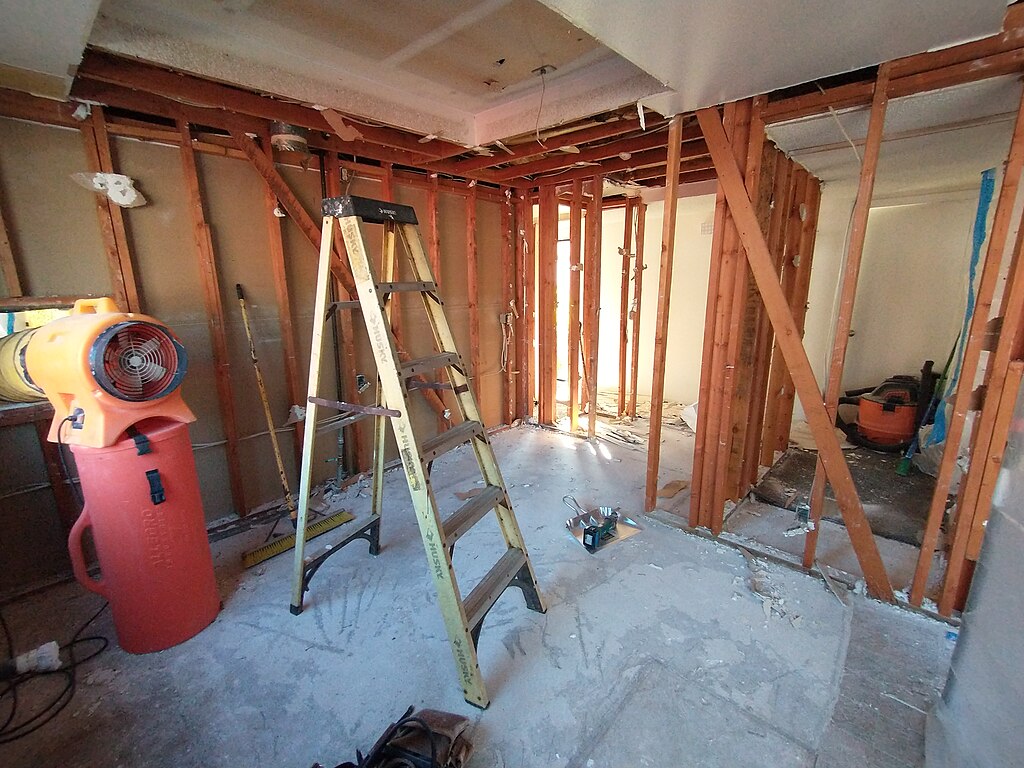Asbestos was once lauded for its insulating and fireproofing properties, but we now know the toxic mineral poses severe health risks. If you’re looking to sell a property containing asbestos materials, don’t let this deter you – with proper precautions, a sale is achievable. From identifying problem areas to engaging specialists and following regulations, this guide outlines the key steps sellers should take to safely offload an asbestos-affected property while minimising legal liabilities.
What is asbestos?
For the uninitiated, asbestos refers to a group of naturally occurring fibrous silicate minerals. Prized for their heat resistance and durability, asbestos-containing materials (ACMs) were widely used in construction for insulation and fireproofing throughout much of the 20th century.
However, when these mineral fibres become airborne, they pose a serious inhalation risk. Asbestos exposure has been directly linked to life-threatening diseases like mesothelioma, lung cancer and asbestosis. As a result, its use was finally banned in the UK in 1999, though some older properties still contain legacy ACMs.
Common locations for asbestos include pipe insulation, floor tiles, roof shingles, siding, joint compound and even ironing board covers produced before the 1980s. If your home pre-dates the turn of the millennium, it might be worth having it professionally inspected for the presence of any potentially harmful ACMs before attempting renovations or a sale.
What are the three main types of asbestos?
Not all asbestos-containing materials are created equal. There are three principal types that Construction professionals and homeowners should be aware of:
Chrysotile (White Asbestos)
The most commonly used form, chrysotile accounts for roughly 90% of asbestos found in buildings. Its curly, pliable fibres were frequently mixed into cement, plastics, and insulation products. While toxic, chrysotile is considered less hazardous than other asbestos varieties.
Amosite (Brown Asbestos)
Sourced mainly from southern Africa, amosite asbestos consists of straight, brittle fibres. It was favoured for insulating against heat and corrosion in industrial settings. However, amosite is regarded as one of the most carcinogenic asbestos types due to its potency when airborne.
Crocidolite (Blue Asbestos)
Crocidolite gets its distinctive bluish hue from the presence of iron. With extremely sharp, needle-like fibres, it is the most hazardous form of asbestos. Thankfully, its usage was limited compared to other types, though it can still be found in older steam engine insulation.
While the risks vary, all three of these asbestos categories pose serious health dangers if disturbed and inhaled. Professional abatement is strongly recommended regardless of which type is present during home renovations or demolition.
How do I know if my property has asbestos?
Unless your home was built recently, there is always a possibility that asbestos-containing materials could be present. Certain features or construction timelines can heighten that risk factor.
As a general rule, if your property was constructed prior to the year 2000, it is highly advisable to have it inspected by an accredited asbestos surveyor. These qualified professionals use specialised testing methods and sampling techniques to definitively detect ACMs that may be integrated into your home’s structure or interior finishes.
Even homes built as recently as the 1990s may not be in the clear, as asbestos protections were not comprehensively enforced until late in the decade. Older properties, such as those from the mid-20th century, are considered high-risk due to the prevalence of asbestos use at that time.
If you attempt renovations or repairs before an asbestos survey, you could inadvertently release harmful fibres into the air. Do not take chances – when selling an aged property, professional asbestos testing is a necessary first step to protect yourself and potential buyers from exposure.
Do I need to declare asbestos when selling my home?
Stumbling upon asbestos in your home can feel like a thorn in your side when it comes time to sell. But make no mistake: failing to disclose the presence of ACMs is a legal minefield you do not want to find yourself trapped in.
Under UK property laws, sellers are obligated to be fully transparent about any known defects or issues that could impact a home’s value or desirability. Asbestos undoubtedly falls into that category. Attempting to cover it up or turn a blind eye is considered fraudulent misrepresentation.
The consequences of such deception can be dire, from rendering the sale null and void, to facing hefty fines or even prosecution under the Property Misdescriptions Act. Buyers who unknowingly purchase a property containing asbestos may also pursue civil legal action against sellers, for damages.
Don’t let the asbestos stigma tempt you down this risky path. Full disclosure is not only legally required, but the ethical choice to protect the health and financial interests of prospective buyers. Approach it proactively and responsibly by having professional surveys conducted, then commit to open communication every step of the way.
How do I sell my house with asbestos?
Once you’ve identified and disclosed any asbestos materials in your home, it’s time to weigh up your selling options. There are a few main paths you can take, each with their own pros and cons to consider.
The estate agent route
Going through a traditional real estate agent is certainly possible when selling an asbestos-impacted property. However, you may encounter some hurdles. Many buyers will be immediately put off by the A-word, fearing costly remediation work. This can severely limit your pool of prospective purchasers and result in a lower sale price and the property sitting on the market for a long time.
The auction option
Selling at auction can be a swift way to offload an asbestos-containing home. That said, the entire process moves at a hectic pace, leaving little time for extensive surveys or abatement before the sale date. Auction buyers also tend to expect heavily discounted prices in exchange for taking on the asbestos risk, and sales at auction are not guaranteed.
The Property Rescue solution
For a truly hassle-free way to sell your asbestos home, using an experienced property buying company like Property Rescue is often the answer. We will gladly buy your asbestos affected property and after the sale, our team of professionals will handle the asbestos removal work.
We’ll even cover any survey fees and solicitor costs involved with selling your home so you don’t pay a penny.
Rather than enduring months of headaches and uncertainty on the open market, you can have cash in hand for your affected property in as little as 48 hours. With Property Rescue, the entire process is transparent, efficient and tailored to your unique preferences.
Get a free, no-obligation quote for your property today.





